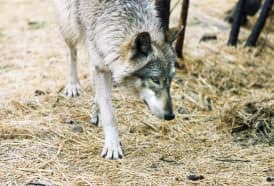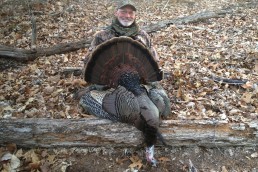Plight of Minnesota Gray Wolves
SHARE THIS POST
Effective December 19, 2014, Minnesotans can no longer kill a wolf except in defense of human life. A federal judge’s decision to immediately reinstate Endangered Species Act protection for the gray wolves in Minnesota, Wisconsin and Michigan, placing the animals under the protection of the U.S. Fish and Wildlife Service. Wolves now revert to the federal protection status they had prior to being removed from the endangered species list in the Great Lakes region in January 2012. That means wolves are now classified as threatened in Minnesota and endangered elsewhere in the Great Lakes region. Only agents of the government are now authorized to take wolves if depredation occurs.
What is it about Minnesota gray wolves that induce federal judges to create more trouble for them? Allowing wolves to continue to become even more abundant now after our MDNR was finally given the opportunity to begin a management program beneficial for wolves, moose, deer, wolf country citizens and farmers, hunters, and just about anyone else interested in allowing gray wolves to fit into the scheme of things is tragic.
Personally, I like gray wolves. I enjoy encountering them in the wilds and hearing their eerie howls at sunset. Throughout my seventy-some years of hunting, fishing, canoeing and camping from the wilds of Aitkin County in Minnesota to the Pipestone River in Ontario, they’ve always been near, sometimes adding considerable excitement to my many adventures afield. Some even taught me to be a better deer hunter—imagine that. They are beautiful, intelligent and resilient predators, as large as a Minnesota yearling doe and capable of taking down a 1,200-pound moose. You have to admire an animal like that.
Today, our Minnesota gray wolves are in trouble and I want to help them. The problem is, I’m not the only one who believes our wolves are in trouble and need help. After Minnesota’s new wolf management program began in 2012, which including hunting and trapping as means of reducing wolf numbers, some Americans imagined our wolves were in trouble again and something had to be done to stop the killing. They finally succeeded by convincing a federal judge the gray wolves of northeastern Minnesota wolves needed total protection.
The northern boundary of the area in which I have been studying gray wolves and their effects on white-tailed deer and moose in Minnesota since 1990 is only about three miles from the southern border of Ontario, Canada, a province in which gray wolves have long been very numerous. In fact, Ontario gray wolf numbers are currently at a historic high. Considering Ontario’s immediate proximity to Minnesota, Ontario wolves doubtless consider northeastern Minnesota to be a part of their own territory. From the north shore of Lake Superior in Minnesota to the arctic regions of Canada, it’s all wolf country. Being over-abundant, many Ontario wolves have doubtless been migrating into Minnesota for several years. Nothing bars their way. At any rate, during all my years of hunting, fishing, canoeing and camping in the Arrowhead Region of northeastern Minnesota, right up until the present, I have always found wolves and their signs to be as numerous as ever. It’s no different than in Quetico Provincial Park in Ontario and north of there.
Since 1990, I have faithfully studied and documented lives of wolves in my far-north study area, including accounts of their hunting methods and their effects on numbers of white-tailed deer and moose. I have often shared my findings in this publication throughout this period. I therefore feel quite qualified to write the following statement: “The belief that gray wolves of northeastern Minnesota are now or have ever been threatened or endangered is ridiculous.”
The gray wolves of this region were nonetheless placed on the newly enacted endangered species list in 1973. This happened while white-tailed deer numbers in this three county Arrowhead Region were finally beginning to recover from a series of severe winters in the mid-1960s that practically wiped out the deer of Cook and Lake counties. During the early 1960s this entire region supported up to 22 whitetails per square-mile, providing some of the best deer hunting in our state. When I first began my wolf/deer studies there in 1990, 17 years after our gray wolves became totally protected, there were only 11 whitetails and three moose per square-mile in my new, far-north study area. Since then, whitetail numbers there have varied between eight and 11 per square-mile, never once coming even close to early 1960s’ levels despite beneficial logging.
Are you enjoying this post?
You can be among the first to get the latest info on where to go, what to use and how to use it!
Meanwhile, moose numbers there dwindled to their present level of three per four square-miles, which is not surprising. My hunting partners and I have witnessed wolves pursuing several moose calves in this area and we have also occasionally discovered sites where adult moose had been killed and eaten by wolves. Our severe winters of 2012–13 and 2013–14 further reduced deer numbers in this region. According to information provided by our MDNR last fall—though some skilled hunters enjoyed agreeable bucks-only hunting success there in 2013 (my hunting partners and I)—overall success in this region was only about one deer per 10 square-miles, hunting made more difficult by year-around hunting by growing numbers of protected wolves, making surviving whitetails extraordinarily wary.
Between 1990 and 2010 wolf numbers in this region increased enormously. From hearing only our original nearby pack howling at sundown each day in November of 1990, by 2010 we were hearing packs howling at four additional distant sites at sundown. Not only that, from rarely seeing wolves during daylight hours in the 1990s (seeing them mostly during early morning hours), beginning in 2010 we began seeing them and hearing their howls during all daylight hours. By then they were even regularly consuming entrails of deer in daylight within one to two hours after we had taken those deer, doubtless keying on gunshots. All this made it obvious our normally nocturnal wolves were beginning to find it difficult to find adequate food during nighttime hours only—a logical consequence of over-abundance.
One major way wolves were keeping our whitetails from increasing significantly in number was their large-scale depredation of fawns. Following mild to moderate winters, most does in my study area, two years of age or older, gave birth to twin fawns in May. All summer and fall since 1990 virtually every wolf dropping ever discovered in this region contained undigested deer hair and often unworn and unstained fawn teeth and fawn-sized hooves and declaws. By early November each year, only one fawn per two mature does was found living in my study area. To put it simply, throughout the past 25 years wolves have preyed on three of every four fawns in my study area between May and early November.

Today, significant numbers of gray wolves now reside almost as far south in Minnesota as northern suburbs of Minneapolis and St. Paul and eastward across west-central and northern Wisconsin into Upper Michigan. Why do they inhabit these regions now and not before in our lifetime? Aside from a few recent releases of gray wolves in Wisconsin, wolves are now found in increasing numbers throughout these new regions because young wolves seeking home ranges of their own have been forced to travel farther and farther from northeastern Minnesota to find suitable habitat not yet established as home ranges by other wolves. Wolves of established home ranges fiercely repel invasions by other wolves, sometimes even killing them. Thus our steadily increasing number of young wolves has been forced to begin a rapid and unusual expansion of wolf ranges well beyond northeastern Minnesota. What this so obviously means is, no matter how many or how few wolves anyone claims currently inhabit northeastern Minnesota, northeastern Minnesota no longer has room for additional wolves.
The judge’s order to bring a halt to Minnesota’s wolf management program is certain to only result in a continuing increase in numbers of already over-abundant gray wolves in northeastern Minnesota and a continuation of the inability of deer and moose there to recover to former levels. It is not right, inhumane actually, to deliberately starve over-abundant wolves that have been allowed to overwhelm their food supply. Reducing wolf numbers via hunting and trapping is the only practical way to alleviate this tragic dilemma. Hopefully the judge’s order can somehow be rescinded soon. Only then can our well-qualified Minnesota game managers begin working toward creating an ideal wolf country balance between our mightiest of predators, our magnificent gray wolves, and their major traditional prey, our deer and moose.
Dr. Ken Nordberg has written more than 700 magazine articles and 12 books on the habits and hunting of whitetails and black bears, including the “Whitetail Hunters Almanac” series. He also produced “Doc’s Buck and Bear Hunting School” videos. His encyclopedic website is at drnordbergondeerhunting.com.
MWO
SHARE THIS POST
Did you enjoy this post?
You can be among the first to get the latest info on where to go, what to use and how to use it!
Dr. Ken Nordberg
Based on his 55 years of field research, Dr. Ken Nordberg has written more than 800 magazine articles, 12 books on whitetails—including the famous Whitetail Hunter’s Almanac series—five books on black bear hunting and produced Buck and Bear Hunting School videos. You may peruse his encyclopedic website with whitetail hunting tips: drnordbergondeerhunting.com, his blog: drnordbergondeerhunting.wordpress.com, or social media pages.



